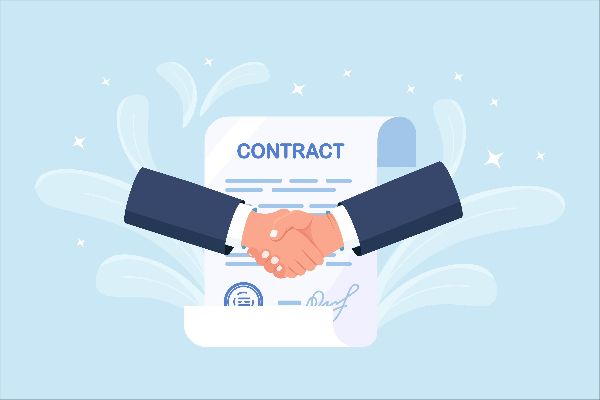Roche vs. Biogen: The Tocilizumab Patent Battle — A Brand-Name Drug Defense in the Era of Biosimilars
In the biopharmaceutical industry, a quiet war is unfolding—one that involves billions of dollars in market value, patent strategies, and regulatory frameworks. The patent dispute between Swiss pharmaceutical giant Roche and American biotech heavyweight Biogen over Tocilizumab has emerged as a focal point in the global competition surrounding biosimilars. This lawsuit not only concerns the commercial interests of the two companies but also reflects the deeper conflict between biologic patent protection and biosimilar substitution. Its outcome may reshape the competitive landscape of the biologics market for the next decade.
I. Background and Market Landscape: Tocilizumab’s “Patent Cliff” Crisis
Tocilizumab, developed by Genentech under Roche, is an IL-6 receptor inhibitor that was first approved in 2005 for the treatment of rheumatoid arthritis (RA). Its indications have since expanded to include giant cell arteritis, systemic juvenile idiopathic arthritis, and even severe COVID-19 cases. In 2022, the drug generated global sales of $3.12 billion, accounting for 6.3% of Roche’s pharmaceutical revenue, making it a cornerstone product in Roche’s immunology portfolio. However, with key patents nearing expiration, Roche is facing the looming threat of a "patent cliff."
Drug Characteristics and Market Position
Tocilizumab works by inhibiting the IL-6 signaling pathway, significantly improving symptoms of inflammatory diseases. Its continuously expanding indications—such as its 2017 FDA approval for cytokine release syndrome associated with CAR-T cell therapy—have further solidified its market presence. In 2022, the U.S. market contributed approximately $1.8 billion to global sales, the European market accounted for $1.2 billion, with the remainder from Asia and other regions. In the RA market, Tocilizumab stands alongside AbbVie’s Humira and Johnson & Johnson’s Stelara in a triad of major players. Its Emergency Use Authorization (EUA) for treating severe COVID-19 positioned it as a "lifesaving anchor" for Roche during the pandemic.
Patent Fortification and Challenges
Roche has built a multi-layered patent defense system for Tocilizumab:
Core Patents: These cover molecular structure (US7855275B2, expiring in 2025) and manufacturing processes (US9458229B2, expiring in 2035). Specifically, US7855275B2 protects the antibody’s amino acid sequence, while US9458229B2 addresses optimized CHO cell culture conditions, including temperature, pH control, and Protein A chromatography in purification steps.
Peripheral Patents: These include formulation (US9139643B2, covering a specific ratio of polysorbate 80 and histidine buffer), dosing regimens (US10137106B2, focusing on dose adjustment for giant cell arteritis), and expanded indications (e.g., US10729733B2, covering use in severe COVID-19 cases). In total, Roche holds over 20 patents related to Tocilizumab, forming a "patent thicket" aimed at delaying biosimilar market entry until 2035.
However, the emergence of Biogen’s Tocilizumab biosimilar, BIIB800, has disrupted this balance. In 2023, Biogen submitted a Biologics License Application (BLA) to the U.S. FDA for BIIB800 under the streamlined 351(k) pathway. The biosimilar is expected to be priced 30–40% lower than the originator drug, and, if approved, would directly threaten Roche’s market share. Biogen claims it employs a novel continuous-flow bioreactor technology that significantly reduces manufacturing costs. Nonetheless, Roche argues that Biogen’s production process still falls within the scope of its patented technologies—setting the stage for an intense patent litigation battle.
II. Legal Battle: A “Carpet-Bombing” Patent Dispute Involving 20 Patents
At the heart of this lawsuit lies a fierce battle over 20 patents. Roche has accused Biogen’s BIIB800 of infringing upon its patents related to molecular structure, manufacturing processes, formulation compositions, and methods of use.
On the molecular level, the specificity of the complementarity-determining region (CDR) sequences in tocilizumab is key to its uniqueness. In terms of manufacturing, Roche emphasizes its proprietary barriers surrounding CHO cell culture conditions and purification steps (such as Protein A chromatography parameters). For the formulation, specific concentrations of stabilizer combinations (polysorbate 80 with a histidine buffer) are included in the patent claims. Additionally, Roche holds a dosing regimen patent for giant cell arteritis, aiming to broaden its patent protection to cover expanded indications.
Roche’s Claims
·Molecular Structure Patent Infringement: Roche argues that the antibody CDR sequences of BIIB800 are highly homologous to those of tocilizumab and fall within the protection scope of US7855275B2. Although biosimilars are permitted minor structural variations, Roche insists that its patent claims cover “functionally equivalent” antibodies, and Biogen’s drug shows no significant difference in IL-6 receptor binding affinity compared to the originator product.
·Manufacturing Process Infringement: Roche accuses Biogen of using the same temperature control (36.5±0.5°C) and pH regulation (7.2±0.1) parameters as outlined in US9458229B2 in its CHO cell culture process. Furthermore, the buffer composition for Protein A chromatography allegedly matches that disclosed in the patent. Although Biogen asserts it uses a “perfusion bioreactor” instead of batch culture, Roche contends this technology still falls under the “continuous manufacturing” claims of its patent.
·Formulation and Dosing Regimen Infringement: US9139643B2 claims a stabilizer composition with polysorbate 80 concentrations between 0.01%–0.05%. Roche alleges BIIB800 contains 0.03%, which falls within this range. US10137106B2 protects a “once-weekly 480 mg” dosing regimen for treating giant cell arteritis, and Biogen’s clinical trial data reportedly follows this exact regimen.
Biogen’s Defense Strategy
Biogen has filed multiple inter partes review (IPR) petitions with the U.S. Patent and Trademark Office (USPTO), arguing that some of the patents are invalid due to “obviousness.” For example, it claims that the dosing regimen in US10137106B2 lacks inventiveness, as it is a modified version of the known rheumatoid arthritis dosage (8 mg/kg), and that no unique efficacy was demonstrated in giant cell arteritis trials. The formulation patent US9139643B2 is also challenged as “obvious,” since polysorbate 80 is a widely used stabilizer in biologics. Biogen further asserts that its use of a perfusion bioreactor allows for reduced cross-batch contamination and more efficient removal of metabolic waste compared to Roche’s batch process. While acknowledging the similarity in temperature and pH parameters, Biogen emphasizes that minor process adjustments (such as a 10% extension in culture duration) place its practices beyond the scope of the patent claims. For the formulation, Biogen states it maintains polysorbate 80 at 0.028%, which it argues is below the lower limit of 0.01% claimed in US9139643B2—citing precision analyses that suggest potential calculation errors in the patent’s claimed concentration range.
Procedural Complexity
Under the Biologics Price Competition and Innovation Act (BPCIA), Biogen is required to resolve patent disputes with Roche prior to market entry. The two parties have engaged in the so-called “patent dance” as follows:
·March 2023: Biogen provided Roche with its BLA materials, including biosimilarity data, manufacturing descriptions, and clinical trial protocols.
·May 2023: Roche listed 20 potentially infringed patents: 12 related to manufacturing, 5 to formulation, and 3 to method of use. Biogen acknowledged only 5 as potentially applicable and submitted a freedom-to-operate (FTO) analysis, arguing the remaining patents were invalid or irrelevant.
·July 2023: After negotiations broke down, Roche filed a lawsuit in the District Court of Massachusetts, seeking an injunction to block the launch of BIIB800. Roche invoked Section 271 of the U.S. Patent Act, alleging both direct infringement (via manufacture and sale of BIIB800) and induced infringement (by promoting its biosimilarity to Actemra).
The case is now at a critical juncture. The USPTO may soon rule on the IPR petitions. If certain patents are invalidated, Roche’s case could be significantly weakened. For instance, if US10137106B2 (the dosing regimen patent) is struck down, Biogen could argue its giant cell arteritis indication is non-infringing. Meanwhile, the district court must decide whether to issue a preliminary injunction. The judge will weigh Roche’s claim of “irreparable harm” (such as irreversible loss of market share upon BIIB800’s entry) against the “public interest” (improved access and lower costs from biosimilar competition). If the injunction is denied, BIIB800 may launch in Q2 2025. If no settlement is reached, the case will proceed to a jury trial, focusing on patent validity, infringement determination, and damage assessment.
III. Market Impact: A Life-and-Death Battle Over a $3 Billion Market
For Roche, the patent battle over tocilizumab is pivotal to the survival of its immunology business. If BIIB800 successfully launches in 2025, Actemra’s U.S. market share could plummet from 90% to 50%, resulting in annual revenue losses exceeding $800 million. More critically, the litigation itself is financially burdensome—estimated at $30–50 million—and carries the risk of reverse compensation should core patents be invalidated. Moreover, other biosimilar manufacturers (such as Samsung Bioepis and Celltrion) may seize the opportunity to accelerate development, potentially triggering a price war that further erodes Roche’s profit margins.
Roche’s Defense Costs and Risks
In addition to direct litigation expenses, Roche must absorb the costs of responding to patent invalidation challenges (e.g., expert witness fees, technical analyses), with total costs projected to reach $50 million. If core patents are invalidated, Roche may be liable for compensating Biogen for damages incurred due to litigation, such as delays in R&D, which could amount to tens of millions of dollars. Even in the event of a legal victory, the launch of BIIB800 could be delayed until 2026 due to procedural holdups, but competing biosimilars may enter the market sooner, accelerating market fragmentation.
Biogen’s Market Opportunity and Risks
If Biogen prevails, BIIB800 will become the first approved biosimilar to tocilizumab, with first-year sales projected to reach $400 million. Its pricing strategy—potentially 35% lower than the originator—could make it attractive to hospitals and insurers, particularly in the treatment of severe COVID-19. Success with BIIB800 would establish Biogen as a key player in the biosimilars sector and expedite its pipeline targeting blockbuster drugs such as adalimumab (Humira) and etanercept (Enbrel). However, if the production process fails to fully circumvent Roche’s patents, Biogen may be forced to revise its formulation, resulting in delays in biosimilarity verification or even rejection by the FDA.
Industry Ripple Effects
The launch of BIIB800 could ignite a price war across similar biologics. For instance, after Samsung Bioepis introduced SB8 (an adalimumab biosimilar) in 2017, Humira’s U.S. price dropped by approximately 40%. Biosimilar developers may increasingly favor challenging peripheral patents within the “patent thicket” rather than confronting core molecule patents directly—shifting industry strategy toward “technical workarounds” rather than outright invalidation. Roche, in turn, may seek to extend market exclusivity through indication expansion (e.g., clinical trials of tocilizumab in Alzheimer’s disease) or by developing long-acting formulations. In 2024, Roche submitted a clinical trial application for a once-monthly subcutaneous formulation.
IV. Industry Implications: Patent Strategy Innovation in the Biosimilar Era
This lawsuit has highlighted the fundamental divergence in patent strategies between originator pharmaceutical companies and biosimilar manufacturers. Roche’s “patent thicket” approach—building a multilayered patent network around the core molecule involving structure, process, indication, and formulation—is designed to prolong market exclusivity and delay biosimilar competition. Its dynamic surveillance strategy, such as using AI tools to scan competitor patents and initiate early invalidity challenges, further strengthens its defensive posture. For example, Roche leveraged its patent alert system to detect Samsung Bioepis’s tocilizumab biosimilar development and preemptively filed a lawsuit in 2022, forcing Samsung to revise its strategy.
However, this approach is also under pressure:
Peripheral patents, such as those covering formulations and dosing regimens, are vulnerable to invalidation on grounds of “obviousness.” For instance, if Biogen’s IPR (Inter Partes Review) challenge succeeds, Roche could lose protection over specific dosing strategies. Additionally, biosimilar companies can avoid infringement by tweaking process parameters—such as extending culture duration or adjusting buffer pH—pressuring originators to draft patent claims with greater technical precision.
For biosimilar developers, Biogen’s “precision strike” strategy offers a compelling new blueprint. By conducting Freedom to Operate (FTO) analysis early in the R&D phase, prioritizing challenges against weaker peripheral patents, and adopting technical improvements (e.g., perfusion bioreactors), they can minimize infringement risk. Furthermore, collaborative alternatives to litigation—such as “patent settlement + revenue sharing” agreements with originators—may become more prevalent. For instance, Amgen and Allergan pursued cross-licensing and market allocation agreements in developing a Humira biosimilar, achieving a win-win outcome.
Regulatory Transformation
U.S. lawmakers may revise the Biologics Price Competition and Innovation Act (BPCIA) to shorten the “patent dance” period and curb procedural abuse by originators. For example, the 2023 proposed “BIOSIM Act” seeks to reduce the preliminary injunction hearing window from 18 to 12 months, and would allow biosimilar applicants to continue their regulatory review process during patent disputes. Meanwhile, regulatory harmonization remains a global challenge: the EU’s biosimilarity standards differ significantly from the U.S. patent dance framework, compelling companies to adopt differentiated patent strategies across jurisdictions.
Conclusion: Redefining the Balance Between Innovation and Access in Biologics
The Roche-Biogen patent battle ultimately reflects a longstanding tension between incentivizing biologics innovation and ensuring public access to affordable therapies. Originator companies rely on patent protection to recoup R&D investment and drive future breakthroughs, while biosimilar developers aim to reduce costs and improve treatment accessibility. The outcome of this case will directly shape the competitive landscape of the biologics market for the next decade: a win for Roche may encourage wider adoption of “patent thicket” strategies to extend exclusivity, whereas a victory for Biogen could accelerate biosimilar penetration and pressure originators to innovate more rapidly.
The implications of this litigation go far beyond the case itself. It forces the industry to reassess the boundaries of patent strategy—should companies maximize commercial gains through “technical barriers,” or promote broader technological access through “open innovation”? Future equilibrium will be shaped by evolving regulatory policies, strategic adaptations by pharmaceutical companies, and growing demands from patients for accessible healthcare. Regardless of the verdict, this case is poised to become a landmark in the legal history of biologics, setting a new benchmark for global pharmaceutical innovation and competition.
How to obtain the latest research advancements in the field of biopharmaceuticals?
In the Synapse database, you can keep abreast of the latest research and development advances in drugs, targets, indications, organizations, etc., anywhere and anytime, on a daily or weekly basis. Click on the image below to embark on a brand new journey of drug discovery!




